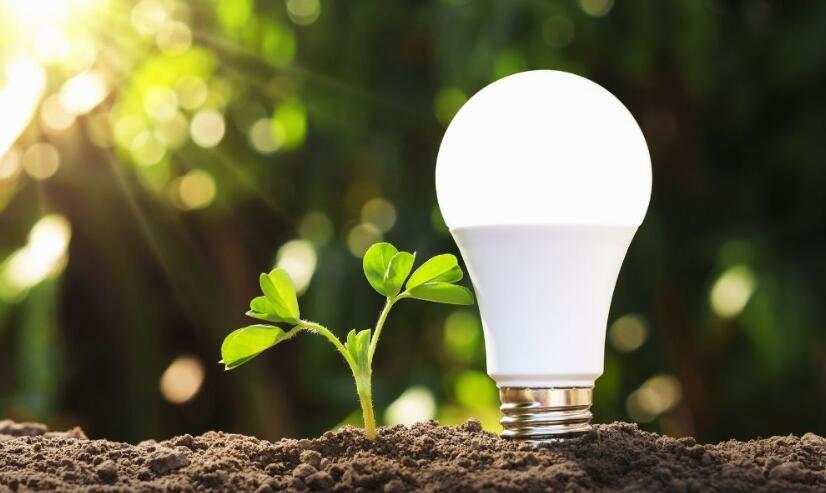As the world grapples with the increasing concerns of waste management and environmental sustainability, it is crucial to focus on recycling and upcycling practices for everyday items. In particular, lamps, commonly found in households and businesses, hold great potential for reducing waste and minimizing environmental impact. This article aims to shed light on the best practices for recycling and upcycling lamps, offering innovative solutions for responsible disposal and creative ways to give lamps a new lease on life.
Lamps, though small in size compared to other household items, can contribute significantly to environmental degradation if not disposed of properly. The materials used in lamps, such as mercury and lead, pose substantial harm to ecosystems and human health. Therefore, it is imperative to raise awareness and educate individuals, businesses, and communities on the best practices for lamp recycling and upcycling.
By understanding the impact of lamps on the environment and adopting sustainable practices for their disposal, we can collectively move towards a greener and more responsible future. Join us as we explore the world of lamp recycling and upcycling, discovering creative ways to minimize waste while illuminating our lives.
Understanding the Impact of Lamps on the Environment
The improper disposal of lamps can have severe consequences for the environment. These seemingly innocuous items contain harmful substances, including mercury and lead, that can contaminate the air, water, and soil. When lamps end up in landfills, these toxins can leach into the surrounding environment, posing risks to both ecosystems and human health.
Mercury, commonly found in fluorescent and compact fluorescent lamps (CFLs), is a potent neurotoxin that can bioaccumulate in wildlife and enter the food chain. Even at low levels, mercury exposure can lead to serious health issues for humans, such as neurological disorders and developmental problems, especially for fetuses and young children. Similarly, the lead content in lamps can have detrimental effects on the nervous and reproductive systems.
It is crucial to prioritize responsible disposal of lamps to prevent these harmful substances from causing long-lasting environmental damage. By recycling and upcycling lamps, we can ensure that valuable resources are recovered, and the potential for pollution and waste is minimized.
Raising Awareness
One of the pivotal steps in encouraging lamp recycling and upcycling is raising awareness about the importance of responsible disposal and the potential impact of improper lamp disposal. Education campaigns targeted towards individuals, businesses, and communities play a vital role in fostering a culture of sustainability.
Government agencies, environmental organizations, and industry stakeholders should collaborate to develop comprehensive awareness programs. These initiatives can focus on educating the public about the potential dangers of lamp waste and the benefits of responsible disposal. Informative workshops, webinars, and public service announcements can help spread awareness about the proper handling, recycling, and upcycling of lamps.
Furthermore, leveraging the power of social media and digital platforms can significantly enhance the reach and impact of these awareness programs. By sharing success stories, informative videos, and engaging content, we can inspire individuals to take action and become ambassadors for sustainable lamp disposal.
Establishing Convenient Recycling Infrastructure
While awareness is crucial, it is equally important to provide individuals and businesses with convenient avenues for lamp recycling. Establishing accessible and widespread recycling infrastructure is key to encouraging participation and ensuring success in lamp recycling initiatives.
Government agencies should collaborate with retailers, manufacturers, and waste management organizations to establish collection points for lamps. These collection points can be located in retail stores, recycling centers, or designated drop-off locations within communities. By incentivizing lamp recycling through partnerships and programs, these collection points can make it easier for individuals to dispose of their lamps responsibly.
Community recycling events can also be organized periodically to encourage lamp recycling. These events can offer individuals an opportunity to bring their lamps and other electronic waste for proper disposal. By combining the convenience of a one-stop collection point with educational components, these events help generate broader awareness and engagement in sustainable lamp disposal practices.
Moreover, technological advancements have made it possible for individuals to access lamp recycling information through online platforms and mobile applications. Creating user-friendly interfaces that allow users to locate nearby recycling centers, schedule pickups, and track their recycling efforts can significantly reduce barriers to participation.
By prioritizing convenience and accessibility, we can ensure that lamp recycling becomes a seamless part of everyday life, instilling sustainable habits in individuals and communities.
The Art of Lamp Upcycling
While proper lamp recycling is essential for minimizing waste and environmental impact, another creative avenue to explore is the art of lamp upcycling. Upcycling involves transforming used or discarded items into new, useful, and aesthetically pleasing creations. By giving old lamps a new lease on life, we can tap into our creativity while reducing the demand for new products.
Upcycling lamps not only diverts them from ending up in landfills but also allows us to unleash our imaginations and create unique, one-of-a-kind pieces. From decorative accents to functional objects, the possibilities for lamp upcycling are endless.
Inspire Creativity
The first step in lamp upcycling is to tap into your creativity and seek inspiration from various sources. Explore online platforms, design blogs, and social media to discover remarkable lamp upcycling projects from artists and DIY enthusiasts around the world. Take note of different techniques, styles, and materials used in these projects.
Experiment with different design concepts and consider the potential uses of a lamp beyond its original purpose. The lampshade, base, and even electrical components can be repurposed and combined with other materials to create something entirely new and visually striking.
By embracing a mindset of exploration and innovation, you can transform ordinary lamps into extraordinary, artistic expressions of your personal style.
DIY Upcycling Ideas
If you’re looking to embark on your own lamp upcycling journey, here are a few DIY ideas to get you started:
– Decorative Plant Stands: Transform an old lamp base into a stylish plant stand by removing the lampshade and attaching a wooden or metal platform on top. This unique piece will showcase your favorite plants while adding a touch of whimsy to your space.
– Terrarium Lamps: Create a captivating mini ecosystem by converting a glass lampshade into a terrarium. Fill it with layers of soil, moss, rocks, and small plants to create a self-contained green oasis. With the lamp base serving as a stable foundation, this transformed lamp will become an eye-catching centerpiece.
– Chandelier Redesign: Revitalize an outdated chandelier by repurposing lampshades as unique and eclectic shades for each bulb. Paint or embellish the lampshades to match your desired aesthetic, and attach them to the existing chandelier frame. The result is a stunning piece that breathes new life into a traditional lighting fixture.
These are just a few examples of the endless possibilities for lamp upcycling. Let your imagination run wild and personalize your creations to reflect your artistic vision.
Collaborative Upcycling Initiatives
In addition to individual upcycling projects, collaborative initiatives can foster community engagement and collective creativity. Workshops, art installations, and competitions centered around lamp upcycling can bring people together, encourage resourcefulness, and promote sustainable practices.
Organize local workshops where participants can learn various upcycling techniques and share ideas. These communal spaces provide an opportunity for individuals to teach and learn from one another, creating a supportive and inspiring environment.
Collaborative art installations utilizing upcycled lamps can serve as a powerful visual reminder of the beauty and potential found in repurposed materials. These installations can be showcased in public spaces, galleries, or even outdoor events, sparking conversations and inspiring others to explore upcycling themselves.
Competitions focused on lamp upcycling can provide a platform for individuals to showcase their creativity and innovation. These competitions can be organized at local, regional, or national levels, with prizes recognizing outstanding upcycled lamp designs. Through these events, community spirit is fostered, and sustainable practices are celebrated.
By embracing collaborative upcycling initiatives, we can create a ripple effect of positive change, inspiring others to reimagine the potential of everyday objects and contribute to a more sustainable future.
Conclusion
In conclusion, proper handling and transportation are crucial for safe lamp recycling. Upcycling offers a creative and sustainable alternative, diverting lamps from landfills. Collaborative initiatives inspire community engagement. By combining responsible recycling and upcycling, we minimize waste and promote sustainability. Together, we can create a brighter and greener future.


